By Johanna Mustacchi
Johanna Mustacchi has been an educator in the Croton-Harmon, New York, school district for the past two decades. She teaches Media Literacy and Communications Skills, Digital Citizenship and Mindfulness at the Pierre Van Cortlandt Middle School and has written several times for Educational Leadership magazine on the teaching of media literacy and digital citizenship. She is a member of the National Association for Media Literacy Education and is on the advisory panel of Mindful.org. Johanna is deeply committed to helping young people develop a greater awareness of themselves and the world around them. She can be reached at Johanna.Mustacchi@chufsd.org.
When a student wants to avoid engagement in a class discussion because she feels unprepared, she looks down at her notebook. The trick is to not make eye contact with the teacher.
In the technology-rich world populated by their children, parents often feel so unprepared to engage in important discussions about responsible, safe and ethical use of digital media, they, too, “look down.”
The current generation of youth lives in the digital universe with surprisingly minimal guidance. Over the years, I have spoken to countless parents who are overwhelmed by the sheer quantity of online issues and challenges their children face with few navigation tools. While parents may understand that many of the same rules apply between traditional citizenship and digital citizenship, the lines are blurred for children who often behave quite differently online when “no one is looking” than they would in person. I once had a student blurt out in a class on online piracy, “I’m not paying a thousand dollars for a thousand songs!” Needless to say, a lesson on the ethical dimensions of media downloads ensued. As Nancy Willard states in her Education World article “Why Teens Make Unsafe Choices Online,” without tangible feedback, teenagers’ brains lack the development to process the repercussions of their online behavior. Parents can use their wisdom and life experience to provide the moral compass their children need to expertly steer their digital lives.
Over the past school year, I and four of my colleagues worked to build a bridge over the digital divide between parents and children, using a showcase for student creativity and work as the arena for meaningful and honest dialogue about citizenship in our digital world.
I cannot underplay the enormous influence Carrie James’s book Disconnected: Youth, New Media, and the Ethics Gap played in the genesis of an event that drew 150 parents, students and community members. After reading the book a year ago, I contacted Dr. James explaining that, while I completely agreed with her call to action to bring parents into the conversation, I wanted her to know how difficult it is to generate parental interest in school events that are not centered around the arts or sports. Taking her sage advice, I followed her prescriptions and can now report on the success of an event that had students “acknowledge and explore the moral and ethical dimensions of online life…” (Chapter 5 of Disconnected).
Focus Groups
Ten months prior to our event (which turned out to be a film festival focused on digital citizenship), two school counselors and I assembled four small focus groups of students in 5th through 8th grade. We gathered information about how students in these age groups spend their online time, including the role, or lack of role, their parents played.
Newsletters
In the fall of the new school year, I began posting on my school web pages a series of “digital citizenship” newsletters targeted to parents. Based on some of the results of our focus groups, and particularly upon my experience teaching media literacy and digital citizenship at our school for the past ten years, I focused the newsletters on provocative topics that would help parents begin conversations with their children at home. To help parents bolster their understanding of these issues, each newsletter provides links to topical articles, statistics, student voices (culled from survey questions I gave my own 8th grade students) and parent surveys. So far, I’ve published newsletters on the topics of sexting, online piracy and technology distractions.
Planning a Film Festival
About six months prior to the film festival, we assembled a team of two administrators, two school counselors and myself to plan an evening that would not only showcase student films, but also an 8th grade student poster session with activities related to digital citizenship, and a panel discussion with students speaking frankly about the role of technology in their lives.
We opened the festival up to all students in 5th through 8th grade, allowing them to sign up individually or in teams of up to four students; of the fifteen teams that originally signed up, nine actually made films. This high return was largely due to how we monitored student progress from day one, including three mandatory meetings and frequent check-ins with individual teams. To guide them, each team received a packet containing rules and criteria, as well as the judging rubric, storyboard template, information on film techniques, bibliography sample, and film submission form. Students received guidelines that included a brief discussion of digital citizenship with questions from which to choose and research for the subject of their no-more-than-two-minute films, divided under the categories of Privacy, Property, and Participation delineated in James’s book.
Marketing the Film Festival
To promote student interest, we focused the entire month prior to the festival as Digital Citizenship Month in our school’s thriving Advisory program. During their lunch periods, students watched and discussed videos on digital citizenship topics with our assistant principal, and during their Advisory classes, students participated in further activities. In addition, we advertised the film festival with flyers, daily announcements, website announcements, and a series of email blasts to all parents, including survey questions later used in the festival’s panel discussion. At the same time, my 8th grade students were in the process of creating cyber safety lessons for my 6th grade students. These students turned their lessons into highly engaging posters for the evening’s poster session, which they presented to visitors.
The Film Festival Evening
We divided the evening into three parts: the 8th grade poster session; a panel discussion featuring three 9th grade students (from our 8th grade focus group of the year before) answering parents’ questions; and the showing of the nine student films followed by certificates for all filmmakers and awards and prizes for the top three films. We had judged the films two days beforehand with the help of a faculty member from the Jacob Burns Film Center Media Arts Lab. The poster sessions and films focused on a broad range of issues, including plagiarism, piracy and fair use, phishing scams, cyber bullying, sexting, online grooming, catfishing and behavioral targeted advertising. We also put together a parent tips packet so that they would have additional material to take home and use as conversation starters with their children.
The Other Bridge
In addition to bridging the digital divide between parents and children, another important goal of the festival was to bridge the ethics gap apparent in the digital lives of youth, described by Dr. James. I noticed that gap closing over and again on that March evening, when 8th graders passionately taught mothers, fathers, sisters and brothers how to respond to an inappropriate text message; when our 9th grade guest speakers implored parents to pay attention to who their children are speaking to in their online games; and when 5th, 6th, 7th and 8th grade filmmakers created stories that highlighted some of their own experiences with ethics online. The film festival exposed parents and children to issues they may not have considered before, providing the opportunity for a more open dialogue.
The success of this event was summed up beautifully by one of the 6th grade filmmakers, who said, “I wanted to make a movie about cyberbullying because it’s a real issue. My favorite part of making the movie was that every day we would go to my friend’s house, and we would film little parts of it, and even though we were talking about a serious subject, it was still fun to do, because then I could educate my fellow classmates and tell them about it, but also in an okay way, not [in a way] that would make you feel really sad.”
Excellence, engagement and ethics all rolled into one.









